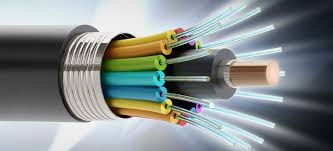

Numerical Apertureįibers and other transmission media are evaluated by numerical aperture (NA), which is the sine of the critical angle. Many of the fundamental principles of RF transmission line theory, such as attenuation, insertion loss, return loss, and dispersion, also apply. Optical physics is the primary field of study that concerns fiber optics. Total internal reflection of light in a section of optical fiber. With the right ratio between the two, light from one end is reflected at the mediums’ boundary, or interface, and guided through the length of the fiber. An optical fibre is a glass or plastic fibre designed to guide light along its length by total internal reflection.

This light, generated by a laser diode (LD) or light emitting diode (LED) is transmitted through one end of an optical fiber and received on the other by a photodiode.įiber optics leverages the total internal reflection properties of optical fiber, which is also a function of the refractive index of the fiber’s core and its cladding. This critical angle is dependent on the refractive indices of both mediums.įiber optics is the use of transparent, flexible fiber to transmit light from one end to the other.įiber optic communication begins with converting an electrical signal to light.

Josell7 / Wikimedia Commons ( source) ( CC-BY-SA-3.0)Įvery medium that light can pass through has a critical angle, or maximum angle such that light entering it is transmitted without being absorbed. Diagram showing refraction, critical angle, and total internal reflection between two media, air and water. When a ray of light light enters a dense medium, such as plastic or glass, it is refracted, or directed in a different direction than its original path. In physics, total internal reflection ( TIR) is the phenomenon in which waves arriving at the interface (boundary) from one medium to another (e.g.


 0 kommentar(er)
0 kommentar(er)
